Uplift Science Fair at UTSW inspires more than 300 future scientists
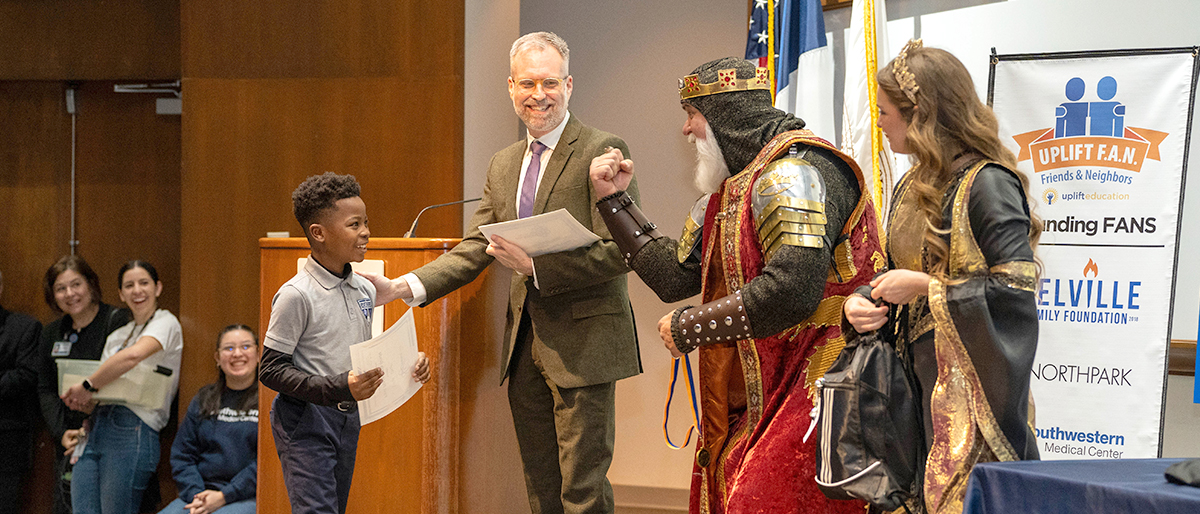
Nine-year-old Elliot Okoh raced up to the stage to receive his first-place prize at the 15th annual Uplift Science Fair. He beamed with pride, accepting a backpack and medal for his entry titled “Coke vs. Coke.”
“It was such a good experience,” said the Uplift Preparatory fourth grader, who discovered more than half of the blindfolded participants in his taste test could not identify the difference between Coke and Diet Coke. “Now I want to do more research.”
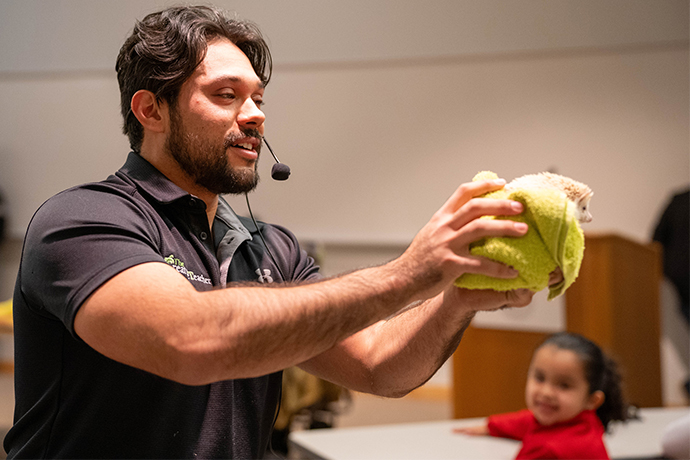
Inspiring students such as Elliot was exactly what the Uplift Science Fair held at UT Southwestern’s T. Boone Pickens Biomedical Building was designed to do. During the annual fair, students from primary, middle, and high schools throughout North Texas highlight their STEM (science, technology, engineering, and mathematics) talents, compete for prizes such as telescopes and bicycles, and vie to move to regional and state competitions.
Nearly 1,000 scholars, teachers, and parents attended the Jan. 25 fair, which has grown steadily. This year, 284 projects were submitted by 315 scholars.
The UTSW STARS Award went to Uplift North Hills 12th grader Sahad Valiani, who won for his project titled “Optimizing Hydroxyapatite to Enhance Biointegration within the Skeletal System.” The STARS Award recognizes a project that exemplifies the spirit of the science fair with a novel research question, solid experimental design, insightful data analysis, and effective communication of the findings.
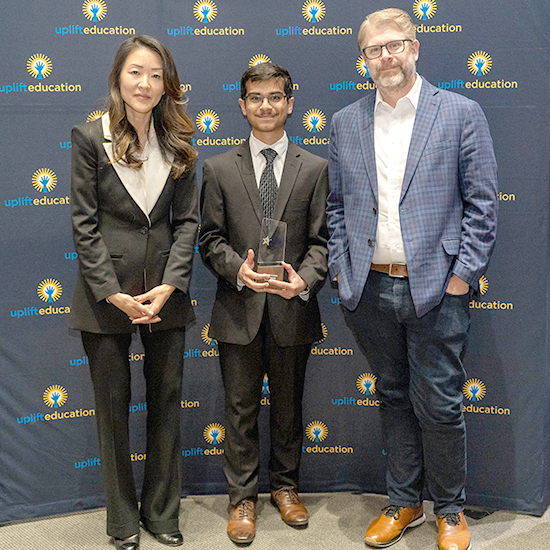
Developed in 1991, STARS (Science Teacher Access to Resources at Southwestern) is an award-winning program in science education outreach. Program goals include maintaining a robust partnership with educators and providing STEM enrichment opportunities for students by leveraging UTSW’s expertise. Today, STARS has served more than 30,000 teachers and an estimated 160,000 students in 4,500 North Texas schools. The scope of STARS has steadily expanded to include more than 20 programs and projects, which are available free to teachers and students. The fair is a collaboration between Uplift Education and STARS.
But the fair offers students more than a chance to compete for accolades – it also introduces them to the STARS program and a potential lifetime interest in science, said Lynn Tam, Ed.D., Director of STARS. “The students become inspired,” she added. “They aspire to become the innovators and scientists of the future.”
At the end of the day, judges awarded nine prizes for entries across three school categories: primary, middle school, and high school. Projects were judged based on scholar presentation using a set grading scale.
One participant, aspiring scientist Alyssa Amador, age 11, tested cotton, gravel, and other materials to see which filtrated water the best. Sand turned out to work most effectively.
“Each grain of sand creates a physical banner that traps particles,” said the Luna Uplift Preparatory fifth grader. “If something happened and people need potable water, they could use what nature gives them to do that.”
After the primary school students received their awards, middle and high school students displayed their poster boards for the judges – UTSW faculty members, staff, students, and community members.
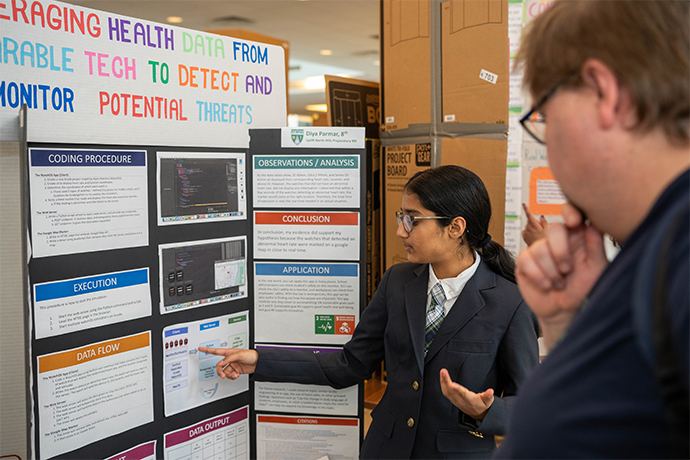
North Hills Preparatory eighth grader Diya Parmar’s first-place-winning project focused on extending the purpose of wearable devices beyond health to include monitoring safety in the workplace, school, or even a city.
“Scientifically and societally, this project can be a starting point of using collective data to locate active and significant threats,” Diya said.
Eleventh grader Anuraag Likki’s project addressed the lack of access to clean water in Central and South America. Anuraag and his brother, Anirudh, developed a sustainable, affordable, and modular water filtration system with the ability to store hundreds of gallons of water and alleviate environmental stress during times of drought and flooding.
“This project taught me the challenges faced by many across the world and that solutions to pressing issues may not be as far away as we think,” Anuraag said. “I got a lot of important feedback on how to improve my project by attending the fair and gained some connections with environmental and civil engineers who were interested and offered me some opportunities.”
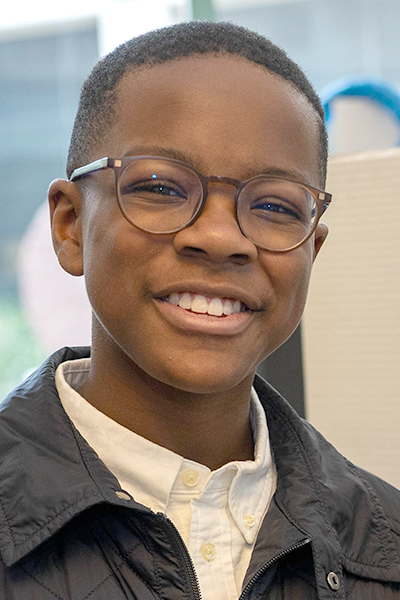
Summit Uplift Preparatory ninth grader Orion Jean’s project explored whether people could tell the difference between articles written by humans and those by artificial intelligence (AI). “For the most part people correctly guessed,” Orion said. “I think people are able to sniff out what is real and what is fake.”
Niyha Johnson, a senior at Uplift Wisdom Preparatory, studied generational trauma for her project. Her goal was to determine how trauma is passed on from one generation to the next. She gathered research to show how trauma affects children and may lead to drug and alcohol abuse. While she waited for the judges’ decision, she admired the work of fellow competitors.
“This was my first time at the science fair, and it was so inspiring,” she said.
The 15th annual science fair, an event designed to foster the next generation of innovators, was a resounding success, Dr. Tam said.
“The fair drew a record number of participants and proved immensely rewarding for all who lent their talents and vision to this collaborative event,” she said.
Endowed Titles
Dr. Collins holds the Jan and Bob Bullock Distinguished Chair for Science Education and the Jane and Bud Smith Distinguished Chair in Medicine. He is also a Rita C. and William P. Clements, Jr. Scholar in Biomedical Research.

